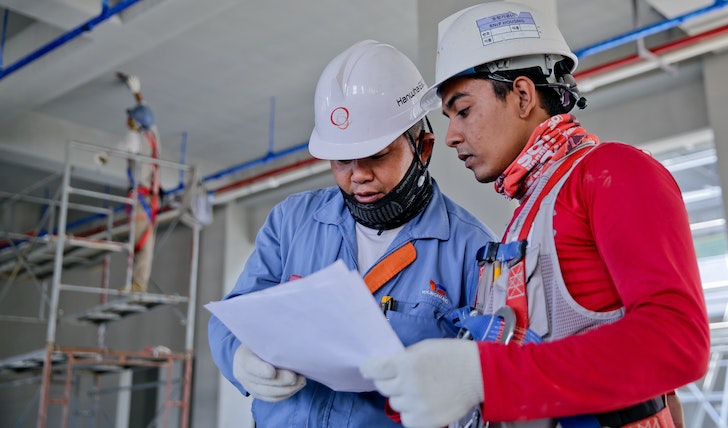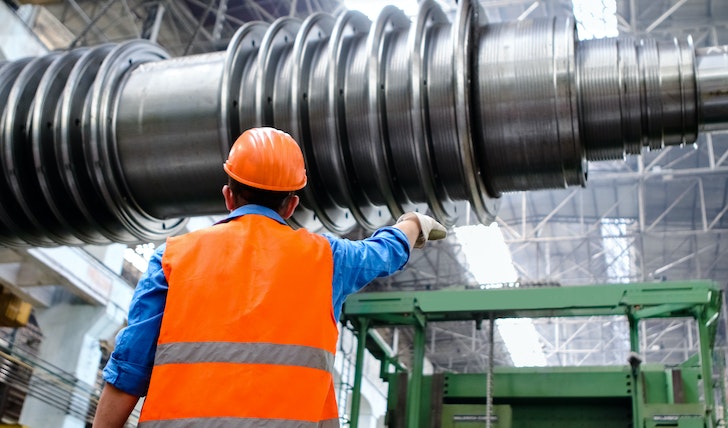
This Deep Learning Tool Enables Engineers to Look “Inside” Objects!

The days of engineers painstakingly examining the interior of materials are over. Thanks to artificial intelligence (AI) and deep learning, engineers can quickly analyze the properties of a material’s surface and determine what is happening beneath it. This deep learning method provides detailed information about internal structures, voids, and cracks – all from exterior data points.
Let’s take a closer look at this deep learning method that is revolutionizing the material industry.

This Engineer / Pexels | According to the early updates, this deep learning method can be applied to all particles – from the parts of airplanes to cars.
How Does Deep Learning Work?
Deep learning uses large datasets to train algorithms to recognize patterns and spot correlations between input features and output variables. In this case, the input features would be exterior conditions. These include:
- Temperature
- Pressure
- Color
Anything observable from the outside of a material. The output variable could be any internal phenomenon or structure that needs to be identified within the material.
The algorithms learn from the datasets to accurately identify internal phenomena and provide useful information to engineers. This is done by using neural networks.
Essentially, these are computer systems modeled after biological neurons in the brain that form connections between input features and output variables. With enough data, these neural networks can accurately predict what is happening inside a material based on exterior conditions.

Anamul / Pexels | This Deep Learning method analyzes the interior of materials right from the outside.
Advantages of Deep Learning
Deep learning has many advantages over traditional engineering methods for analyzing materials. It offers improved accuracy and efficiency while reducing the time needed to gain accurate results from materials testing and eliminating potential human errors during manual analysis.
Additionally, deep learning eliminates certain limitations of traditional measurement techniques, such as limited sample size or access to hard-to-reach locations.
The Future of Deep Learning in Material Analysis
As deep learning technology continues to develop, engineers will be able to use it for a variety of materials analysis applications. This includes analyzing the internal structure of components such as metals, plastics, and composites used in medical devices and automotive parts. The technology can also be utilized by structural engineers who examine bridges and buildings for structural defect detection.

Katerina / Pexels | With the advancement of this Deep Learning method, engineers do not have to dig deep to figure out the malfunctioning in the interior of any material.
Deep learning has made an incredible impact on material analysis and engineering in general. With its ability to quickly analyze data from exterior conditions, engineers can now get detailed information about internal structures much faster than before. This new approach provides accurate results with improved efficiency, eliminating manual errors and saving time for engineers worldwide.
Parting Thoughts
Deep learning has revolutionized how engineers analyze materials, making the traditionally tedious task of material analysis much easier and faster. By using algorithms trained on large datasets, engineers can get detailed information about internal structures, voids, and cracks simply by observing the properties of the material’s surface.
This new approach provides accurate results with improved efficiency while eliminating manual errors and saving time for engineers around the globe. With continued development, deep learning will continue to have an incredible impact on material analysis and engineering as a whole.
More in Celebrity
-
`
5 Reasons Why Joe Rogan Is So Popular As a Podcaster
Joe Rogan is one of the household-name American celebs today. From stand-up comedy stages to UFC commentary booths to dominating the...
August 12, 2025 -
`
This Japandi Design Rule Transforms Your Home With Serene Simplicity
Japandi design is all about balance. It is clean without being cold, warm without being messy. At the heart of it...
August 5, 2025 -
`
How to Keep Your Brain Sharp as You Age
After the age of 40, roughly speaking, our brain begins to lose a step or two. Each year, our reaction time...
July 29, 2025 -
`
How Life in Germany Brought an American Family Closer (But Made Them Homesick)
Family always came first. That is what made the move from Maryland to Germany both exciting and painful for this American...
July 22, 2025 -
`
Angélique Kidjo Becomes First Black African on Hollywood Walk of Fame
Angélique Kidjo just made history. On July 3, 2025, it was announced that Kidjo will be getting her own star on...
July 15, 2025 -
`
Why Smart Window Placement Is the Secret to Aesthetic Home Design
Windows shape how your home looks from the street, how light moves through your space, and how your rooms feel every...
July 8, 2025 -
`
Why Cannabis Use Doubles the Risk of Heart-Related Deaths
Doctors have warned about tobacco for decades, but marijuana is often seen as the safer choice. New research is poking holes...
July 1, 2025 -
`
The Top 5 Best Credit Cards For Family Disney Vacations
A Disney vacation in 2025 is not cheap. Park tickets, hotel stays, meals, and travel can add up fast. But the...
June 24, 2025 -
`
The Surprising Lives of 10 A-List Celebrities Before Fame
Fame changes everything, or so they say. But not everyone flips the switch once the cameras show up. Some stay grounded,...
June 17, 2025















You must be logged in to post a comment Login